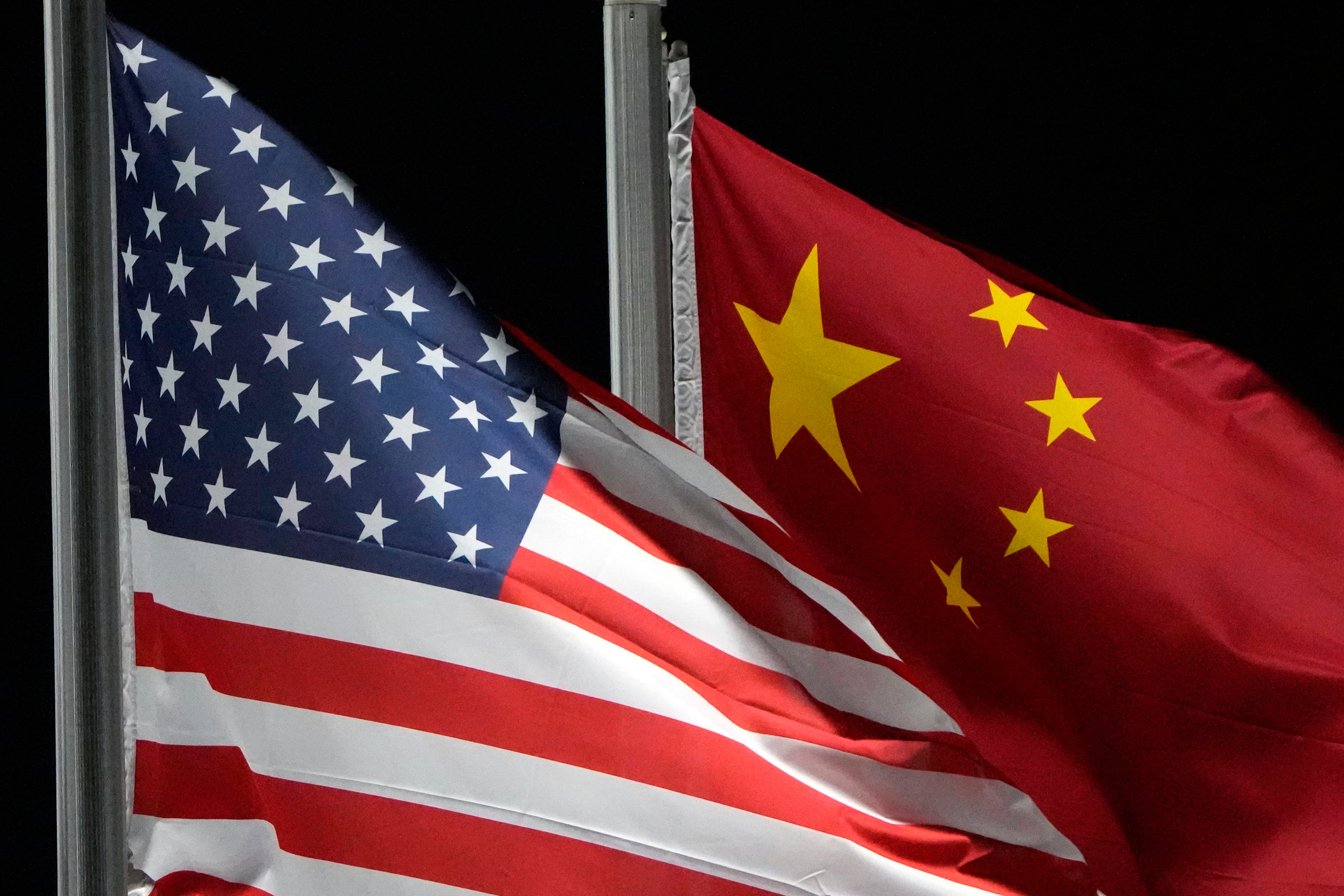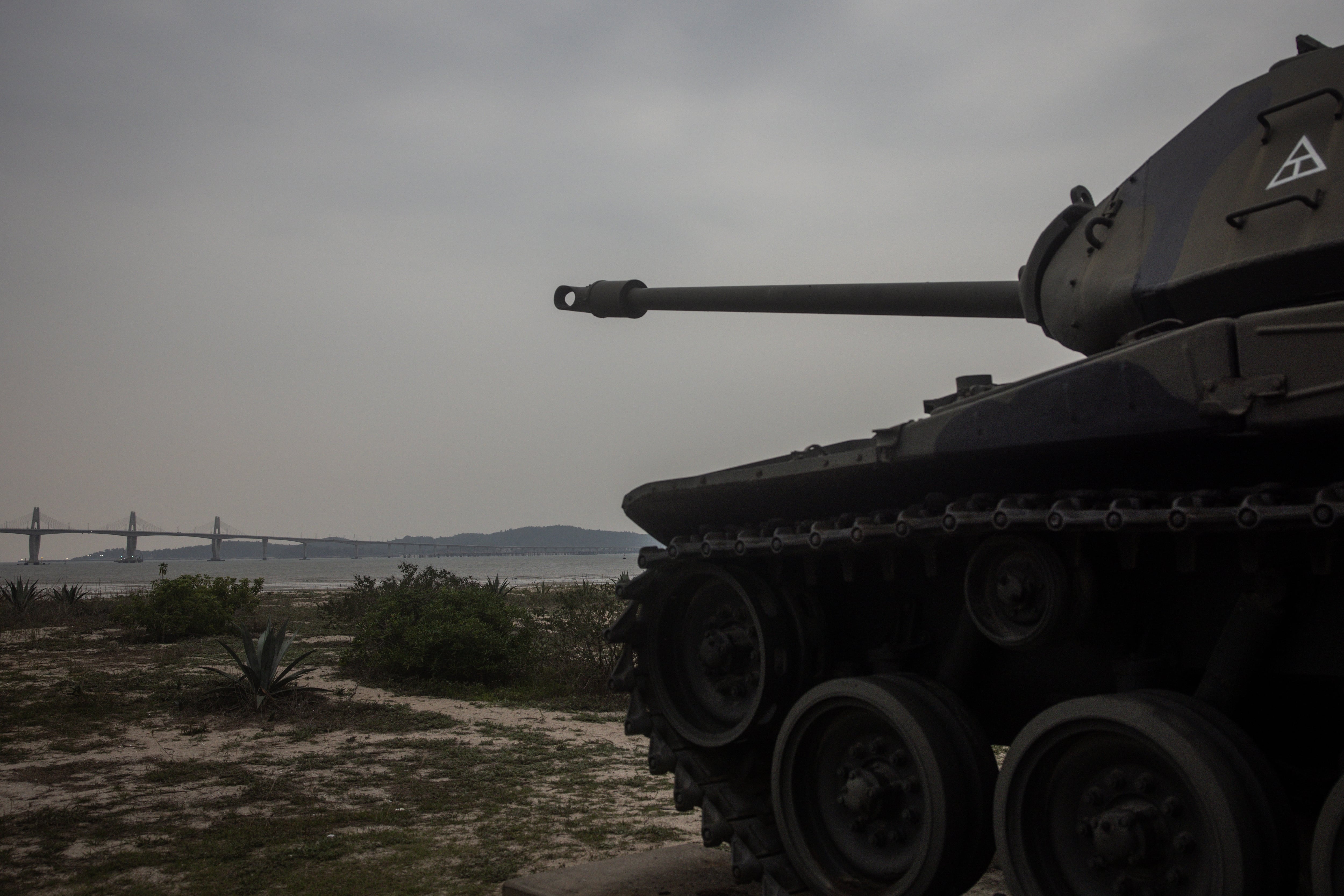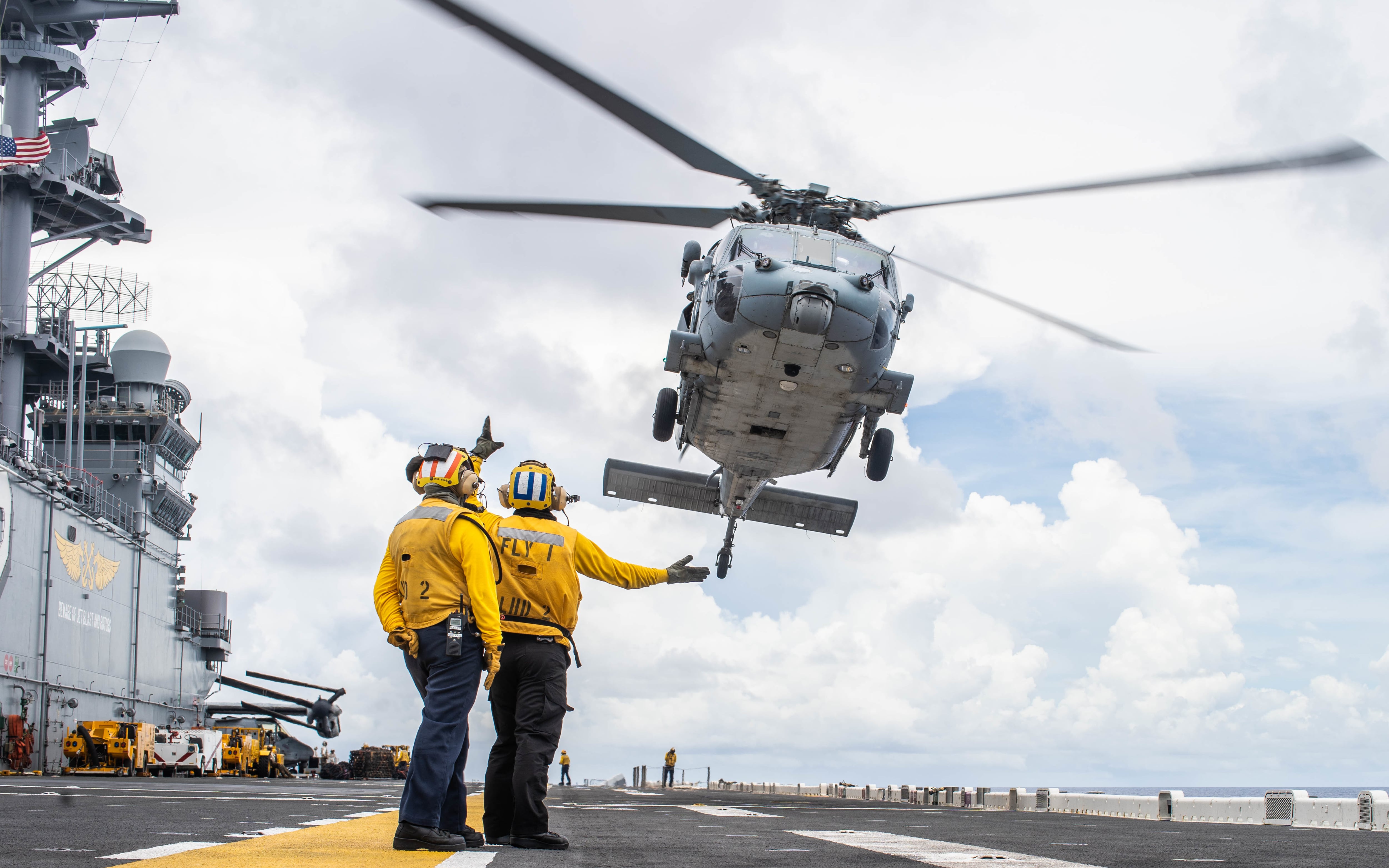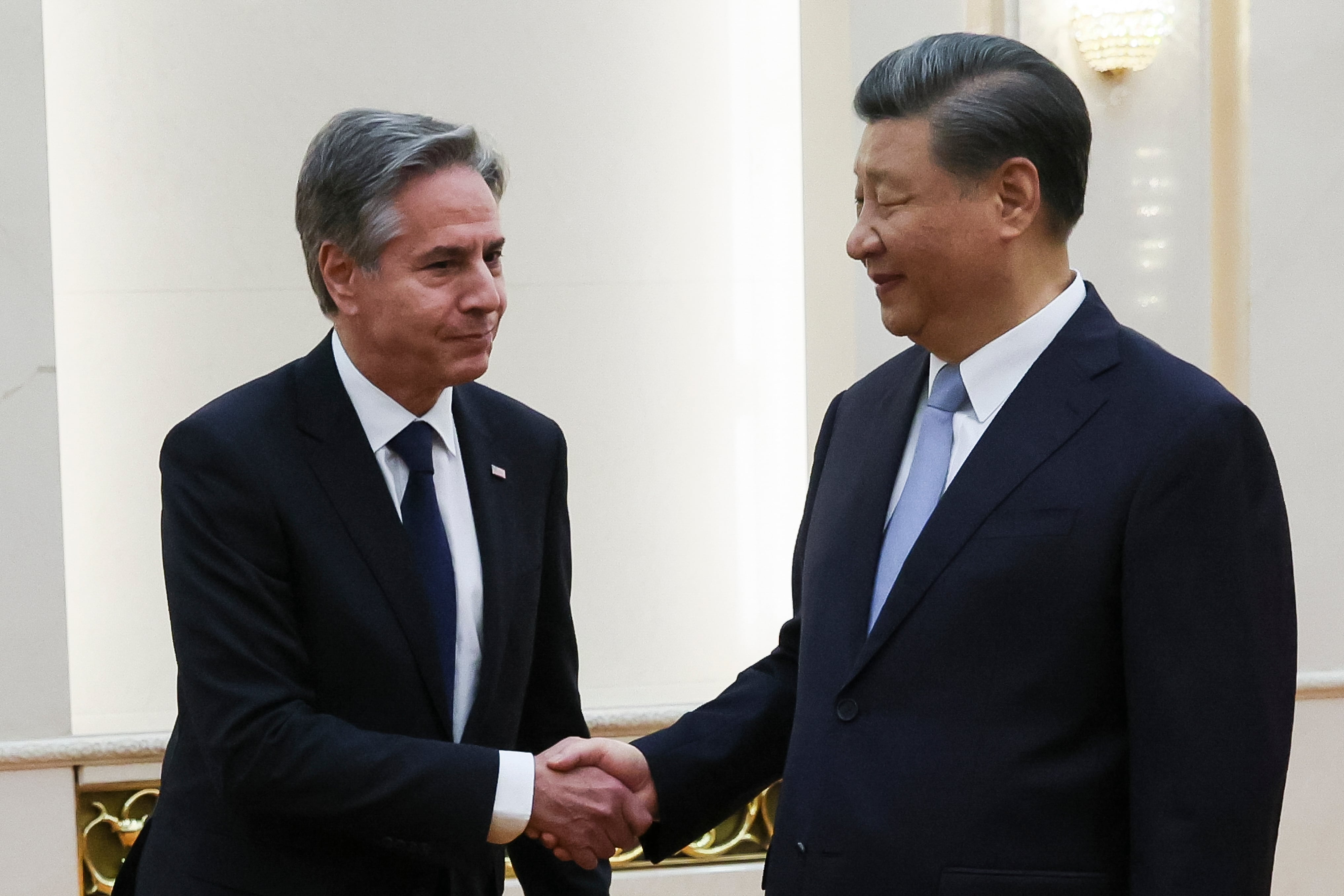Two San Diego-based sailors have been arrested and charged with providing sensitive military information to China, U.S. federal officials announced Thursday.
Machinist’s Mate 3rd Class Jinchao Wei, 22, assigned to the amphibious assault ship Essex, and Construction Electrician 2nd Class Wenheng Zhao, 26, of Naval Construction Group 1, were charged in separate indictments.
The two sailors were charged with similar crimes, but they were charged in separate cases, and it wasn’t clear Thursday if the two were connected or if they were courted or paid by the same Chinese intelligence officer.
Wei was arrested on a charge relating to espionage involving conspiracy to send national defense information to a Chinese intelligence official not identified in his indictment.
Zhao is accused of taking bribes in exchange for providing sensitive U.S. Navy photos and videos to a Chinese intelligence officer, according to U.S. officials.
RELATED

In Wei’s first appearance in federal court in San Diego Thursday, a federal attorney for Wei entered a not guilty plea.
During Wei’s hearing, Assistant U.S. Attorney Fred Shepherd noted that Wei was passing information to the Chinese as recently as two days ago to receive more payment, according to a statement from the U.S. Attorney’s Office for the Southern District of California summarizing the proceeding.
A detention hearing has been set for Tuesday, with a hearing to set a trial date scheduled for Aug. 10, according to officials.
Zhao has also pleaded not guilty and is being jailed until his detention hearing on Tuesday as well, according to officials with the U.S. Attorney’s Office for the Central District of California.
His trial is set to begin on Sept. 26 in Los Angeles.
The indictments against the two lay out a bevy of alleged violations.
Wei’s alleged criminal conduct began in February 2022, the same month that he “received counterintelligence and threat awareness and reporting training, which specifically warned him that foreign adversaries might try to recruit him through … social media and blogs, and instructed him to promptly report any recruitment attempts,” his indictment states.
Wei conspired with a Chinese government intelligence officer, the indictment alleges, and when the espionage activities began, the petty officer “told another U.S. Navy sailor that he had been asked to spy for the (People’s Republic of China).”
He made roughly $10,000 to $15,000 off the deal, according to officials.
Zhao allegedly took more than $14,800 from a Chinese intelligence official from November 2021 to this past March, and provided numerous materials in exchange for that money, his indictment states.
He “maintained a U.S. security clearance and was eligible to access material up to and including the SECRET level,” the indictment states.
On Aug. 12, 2021, Zhao’s Chinese intel handler told the sailor to gather information about a “large scale” military exercise taking place in the Indo-Pacific region.
RELATED

The Chinse intel official asked for a specific plan and details regarding the locations and timing of naval force movements, as well as information about amphibious landings, logistics support and distributed maritime operations, the indictment states.
The next day, at Naval Auxiliary Landing Field San Clemente Island, California — a hub for Navy weapons research and development — Zhao allegedly took a photograph of a diagram marked “Large Scale Exercise 2021 Pacific NCF CONOP,” that was marked “CUI,” short for “controlled unclassified information,” according to the indictment.
On Aug. 14, the Chinese officials told Zhao how to secretly send along the materials, the indictment states, and Zhao sent the photographs through a means not identified in the court record.
“Transmission completed,” Zhao allegedly wrote. “Large scale exercise 2021 on our side.”
The intel official told Zhao they needed this information “for maritime economic research” and to “inform investment decisions.”
A few days later, Zhao allegedly took 12 photographs of computer screens at San Clemente Island that displayed “operational orders of military training exercises,” according to the indictment.
Zhao received payments from the Chinese official in early November 2021, the indictment alleges, and on Nov. 17, he allegedly took multiple photographs of diagrams and blueprints that outlined the “GATOR storage” housing, the Ground/Air Task Oriented Radar Systems located at a U.S. base in Okinawa, Japan, the indictment states.
The sailor allegedly collected several more payments through 2022, and his Chinese government handler instructed him to get “CUI or higher” information to justify giving Zhao a “year-end bonus.”
In October, Zhao sent 16 files to the official using a secure method he had told the sailor to use, according to the indictment.
“The 16 files consisted of PowerPoint, Word and PDF files that contained United States Navy sensitive, CUI marks, and/or OPSEC information,” the indictment states.
Payments to Zhao for the work continued through March, according to the indictment.
The Justice Department charged Wei under a rarely used Espionage Act statute that makes it a crime to gather or deliver information to aid a foreign government.

His indictment states he was paid roughly $8,000 for the information he passed on to an unnamed Chinese intelligence official.
Wei’s indictment alleges that he communicated with his Chinese government handler via multiple encrypted methods, and the handler told the sailor that “non-public U.S. military information” and “original documents” were preferred. And the data he provided wasn’t limited to the Navy; it included details about the number and training of Marines during an upcoming exercise, the Justice Department said.
The sailor’s handler told him to not discuss their relationship and destroy evidence of their relationship, and Wei “surreptitiously gathered national defense information” from restricted Navy computer systems, according to the indictment.
At one point, Wei allegedly handed over documents, plans, sketches and notes regarding the amphib Essex, records that were “conspicuously marked” with warnings that they contained technical data subject to export controls.
On Feb. 18, 2022, the Chinese intel official requested that Wei pass information about ships moored at Naval Base San Diego, and the official requested information on the Essex’s maintenance cycle, the indictment alleges.
Wei said that such activities “would be viewed as spying and affect his pending application for U.S. citizenship,” according to the indictment.
In March 2022, Wei allegedly sent multiple photos and video of Essex to the Chinese official, and the following month, he shared information on sea taskings and locations of Navy amphibs.
The two discussed “the importance of electro mechanics on Chinese type 075 amphibious assault ships and aircraft carriers” in April 2022, according to the indictment.
The following month, Wei “listed the defensive weapons” aboard Essex “and disclosed what he believed was a weak point” on the ship, the indictment states.
Also in May 2022, the intel official sent money to Wei “and congratulated Wei for being granted U.S. citizenship,” according to the indictment.
Wei sent roughly 30 technical and mechanical manuals to the officials in June 2022, “which detailed the operation of multiple systems aboard (amphibious assault ships) and similar ships, including power, steering, aircraft and deck elevators, as well as damage and casualty controls,” the indictment alleges.
A day later, on June 6, the Chinese official lauded Wei’s alleged efforts, noting that he had not seen 10 of the manuals before, according to the indictment.
Wei received $5,000 from the official that month, the indictment states.
RELATED

That same month, Wei allegedly sent multiple photographs of military equipment to the Chinese official.
In August 2022, Wei allegedly sent 26 technical and mechanical manuals related to the power and operations of amphibs and similar ships, with some of the documents containing information deemed “critical technology” by the Navy.
More payments were sent to Wei in August and September, and he allegedly agreed to gather more information on amphibs and “other amphibious combat concepts” for the Chinese official.
In January, that intel official told Wei to film Essex blueprints with his cell phone, including any information about flight deck modifications, the indictment states.
Wei was allegedly paid again that month, and the Chinese official offered to fly Wei and his mother back to China so they could meet in person, but the indictment doesn’t state whether Wei took the trip.
In February, Wei allegedly listed several repairs being done to Essex, “as well as mechanical problems for another (amphib) that would affect the other ship’s ability to deploy as previously scheduled.”
Wei received his last payment from his Chinese handler in June, the indictment alleges.





